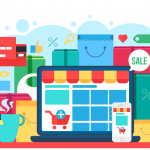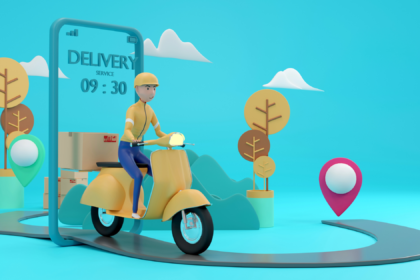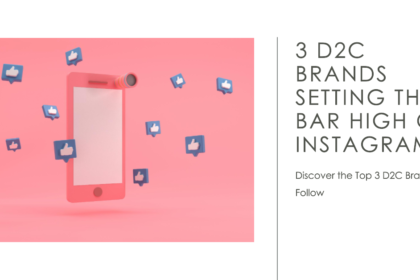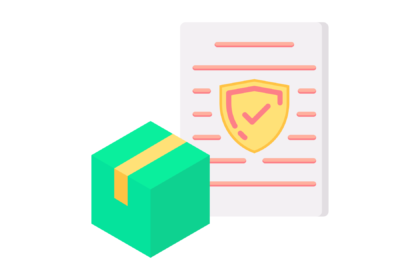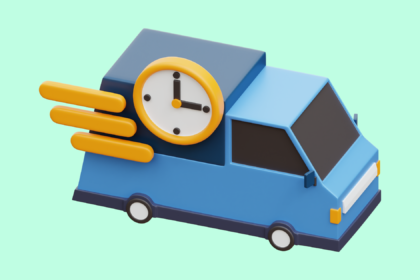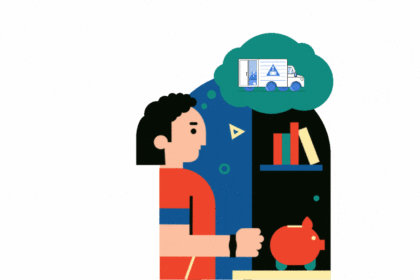Last-mile delivery refers to the last leg of your package’s delivery journey. That is the very last journey the package takes before it reaches the eager hands of your customers. Often considered the most challenging and costly part of the overall delivery process, last-mile delivery has the ability to make or break your customer experience and decide the fate of your customer’s future association with your e-commerce business.
In other words, your last-mile delivery processes are, in fact, the most important part of your post-purchase experience. Mastering it is not optional—it’s mission-critical. You see, a smooth delivery experience (from start to finish) is what earns you customer loyalty, repeat purchases, and glowing reviews, while just one hiccup gets you frustrated customers, a mountain of support tickets, and one-star testimonials.
So, what’s to be done, you ask? Well, the first step is to map out the potholes. Here, we discuss the top challenges of last-mile delivery, how to overcome them, how this final leg of the delivery journey affects your customer satisfaction, and emerging technologies and solutions you should consider to facilitate a winning last-mile delivery experience.
Challenges in Last Mile Delivery
The last mile delivery is the final quest of your package as it approaches your customer’s doorstep. But as is the case with all quests, it’s also full of hurdles, obstacles, and tests. Here are some of the challenges you face with last-mile delivery and how to tackle it like a pro:
1. High Costs
Did you know that you’re likely paying 53% of your total shipping costs only on last-mile delivery? Sounds diabolical, considering your shipping costs, but it is the unfortunate truth. This percentage is due to several factors, such as labor expenses (delivery agents, drivers, etc.), specialized delivery vehicles, fuel costs, having to deal with unpredictable traffic, weather conditions, etc., that throw your last-mile delivery process off-course, and the like.
To battle this effectively, e-commerce businesses must facilitate intelligent planning and optimization to reduce resource wastage. Think efficient route planning, bulk delivery, etc.
2. Evolving Customer Expectations
Customers call the shots today. So, if you’re matching their steps when it comes to their expectations, whether it’s sustainable business practices or same-day delivery, you’re making space for someone else to take your place.
How do you avoid that? Leverage analytics and understand how your customers behave and what they prefer. Or better yet, talk to them! Incentivize them to share feedback and get it straight from the horse’s mouth.
3. Optimizing Route for Efficiency
Mapping out a route that ensures you take the shortest and most efficient route to all your customers’ doorsteps can seem like charting a course to Mars. At such times, what you need is a sophisticated route optimization tool that takes variables such as time windows, driver capacities, and services into account to ensure your final route is bulletproof.
4. Growing Need for Sustainability
40% of customers say that waste reduction and recycling initiatives will make them more likely to purchase from a business. Followed by eco-friendly packaging (38%) and a positive impact on water conservation and nature (34%). Your customer wants a greener future, and they’re willing to change their purchasing habits for the same.
In other words, if you’re utilizing unjustified amounts of plastic or have a reputation for generating toxic waste, it’s only time before your sales pipeline dries up. Consider adopting eco-friendly business practices and taking steps to reduce your carbon footprint.
5. Need for Technology Integration
Real-time tracking, shipping analytics, and automation are very core needs for e-commerce businesses today. But what often stands in the way is the high initial investment and employee resistance.
E-commerce businesses must embrace technology and adopt tools that work well with their existing tech stack. Further, a targeted approach must be taken to educate and train employees on new solutions while highlighting the benefits they’ll enjoy with seamless automation.
6. Compliance with Regulations and Laws
The next challenge of last-mile delivery is ensuring you align your operations with the rules, regulations, and laws on the land where you’re fulfilling deliveries. This can often be a complex space to navigate.
Consider collaborating with local consulting firms or partnering with local shipping carriers and last-mile delivery partners to leverage their knowledge and expertise, and, of course, ensure you stay on the right side of the law.
7. Driver Retention and Training
Steep turnover rates amongst last-mile delivery drivers and, as a result, the ongoing need to train new recruits in technology, company policy, etc., also present a significant challenge. To tackle this, invest in user-friendly solutions and tools that support drivers with real-time communication and navigation. Further, streamline your training programs and facilitate robust security measures to ensure drivers feel safe, supported, and appreciated.
8. Delivery Capacity Limitations
This challenge especially presents itself during peak shopping periods such as the holiday season, Black Friday, etc. During this time, managing the increased volume of orders and ensuring delivery window expectations are still met while keeping prices low can make it seem like your customer is asking for the moon.
Consider integrating scalable solutions and tools that adjust with changes in demand and meet unexpected peaks and lows seamlessly without forcing you to bear the financial brunt.
9. Theft
The next challenge—porch pirates! 41% of Americans have been victims of porch pirates (thieves who steal packages left by delivery agents on the porch). Further, a staggering $12 billion worth of packages are believed to have been stolen by porch pirates in 2023.
A way to prevent this is to share real-time updates with customers and reliable ETAs on their packages to ensure they’re at home when delivery agents come knocking. Another safeguard can be to require a signature to complete delivery, ensuring packages get to the customer safely.
10. Inconsistent or Unclear Communication
We get it—keeping your customer updated every step of the way can be challenging. But, unfortunately, there is no way around it. You just have to do it! Consider integrating LateShipment.com’s Delivery Experience Management software to share personalized and accurate delivery updates with your customers across communication channels.
How does last-mile delivery impact customer satisfaction?
The efficiency of your last-mile delivery processes plays a critical role in driving your customer experience, customer satisfaction, customer loyalty, and repeat purchases—there is no two-way about it.
How does that work exactly? Well, you see, your customer satisfaction hinges on several factors, such as:
- Speed of Delivery: Customers want their package ASAP. In fact, 97% of customers believe ‘same-day’ delivery to be ‘fast’, with 95% considering ‘next-day’ delivery to be acceptable. In other words, if you’re not delivering your order within 24 to 48 hours, you’re likely disappointing your customers and putting your customer satisfaction on the line.
- Quality of Delivery: By this, we mean the state in which your products have reached the customers. Yes, your product might have traveled from across the globe or cross-country, but no, it shouldn’t look like it has. Your product, once it reaches the arms of the customer, should look fresh, pristine, and untouched by the ravages of the delivery journey.
- Delivery Tracking and Updates: 93% of customers want to be kept updated with their shipment’s journey. Today, you must be able to share regular, accurate, and personalized shipping updates with your customers across email, WhatsApp, and SMS. You see, the ability to learn where their package is gives your customers a sense of control and assurance that works to drive their satisfaction with your e-commerce business.
Your last-mile delivery must meet your customer’s evolving needs. And with your current resources, this might seem like a behemoth task. But don’t worry. Our next section discusses some of the most innovative and groundbreaking tools that can not only help you satisfy your customers’ expectations but surpass them as well!
Innovative Solutions and Technologies
Here’s a look at some of the most innovative solutions and technologies that e-commerce businesses are adopting to streamline their last-mile delivery operations:
1. Smart Technology and Real-Time Updates
As discussed previously, your customer wants to be in the know at every step of the delivery process. They want to be informed when the package gets dispatched, where it is currently in transit, and how long it will take to reach them.
Keeping your customers in the loop meets this expectation and helps reduce instances of missed deliveries due to the absence of the customer at the mentioned delivery address. GPS-enabled devices and IoT-powered sensors allow seamless tracking of shipments across the delivery journey. Not only that, but this technology also helps e-commerce businesses gain insight into the efficiency of their shipping operations, aiding data-backed decision-making.
2. Electric Vehicles for Delivery
Amazon, which holds about 37.6% of the e-commerce market share in the US (amongst 12 billion e-commerce stores), ships as many as 1.6 million packages every 24 hours. That’s an expensive operation if you look at the resources required for just last-mile delivery.
Fuel costs alone will break the bank. That is why electric delivery vehicles make so much sense. What’s more, they don’t just eliminate your fuel cost altogether but also give you an eco-friendly alternative to satisfy the increasingly sustainability-oriented customer (72% of customers are ready to pay more for sustainable products, with 34% of customers more likely to purchase products with sustainable credentials). Sustainability is no longer just a concern, it’s a core customer expectation.
3. Micro-fulfilment Centers (MFCs)
Micro-fulfillment centers of MFCs are typically small (3,000-10,000 square feet), automated warehouses that hold a limited amount of inventory (think roughly 15,000 items). They are highly compact and are strategically located close to areas with a high density of customers.
The idea behind MFCs is to store inventory within close proximity to customers so as to reduce delivery time and facilitate cost-effective delivery (no air or rail shipping), optimizing last-mile delivery.
4. Drone Deliveries
A few years back, thinking a flying saucer would deliver your packages to your doorstep seemed like something out of a Steven Spielberg or Christopher Nolan movie. But today, it’s actually possible.
Amazon’s Prime Air program is testing delivery drones to speed up the quick and effective delivery of lightweight packages in suburban as well as rural areas.
This doesn’t just supercharge last-mile delivery but also helps you avoid traffic issues and reduce human effort. If you’re based in College Station, Texas, or Lockeford in California, you might even see Amazon testing their drones.
5. Pick-up Points and Lockers
Secure lockers in public areas or self-service pick-up points where customers can collect their packages (once notified they have been delivered) can reduce the instances of package thefts, delayed deliveries, and failed delivery attempts.
You see, if the last-mile delivery agent has to simply drop packages belonging to customers within a specific neighborhood at one drop-off point, instead of navigating to every last customer’s doorstep, dodging narrow lanes, traffic, security guards, and possessive pets, they’re likely to make more deliveries in a day.
And the best part is that it works well for customers, too! Customers no longer have to ensure they stay cooped up at home awaiting a package when it’s ‘Out for Delivery’. They can follow their own routine, knowing their package is ready to be picked up at a nearby spot when they have a chance to swing by.
6. Dynamic Delivery Planner (DDP)
Created by Amazon Web Services (AWS), Dynamic Delivery Planner, or DDP for short, is a last-mile routing solution that leverages machine learning to ascertain the best route with the smallest delivery time window for your package during its last-mile journey.
Further, it doesn’t just calculate the optimal route for, say, the next day. It is also capable of calculating the best route in real time, taking unpredictable factors such as weather conditions and traffic into account.
It might not seem impressive if you’re managing, say, 10 packages in a day. But if that number goes up to 100 or 200, having a tool that calculates the shortest route possible to your customer’s doorstep is nothing short of a game-changer.
7. Third-Party Logistics (3PL) Providers
Third-party Logistics (3PL) providers offer an end-to-end solution to e-commerce businesses. They manage everything from assembly and packaging to warehousing and distribution. Partnering with a 3PL provider can help you drive your profitability through their resources and expertise.
Some key benefits of collaborating with 3PL providers include saving money in the long run by outsourcing logistics management and reducing the chance of errors by partnering with an experienced team, giving your team more space on their plate to focus on tasks requiring their skill set, facilitating continuous optimization, and better positioning yourself when entering new markets.
Simply put, partnering with 3PL providers means you can scale your e-commerce business effectively while concentrating on your core capabilities.
8. Delivery Experience Management Software
Perhaps the most innovative and effective solution of all that we’ve discussed up till now, Delivery Experience Management software automates your entire delivery process from dispatch, all the way through the last-mile delivery journey.
This platform is specially created to reduce your Where Is My Order (WISMO) tickets and drive your revenue from repeat purchases, while optimizing your customer experience.
For instance, LateShipment.com’s Delivery Experience Management tool facilitates customized order tracking pages accessible from your storefront, personalized and accurate delivery updates for your customers, smart incident alerts to inform your team in case packages make an unexpected detour (delayed, lost-in-transit, etc.), custom discounts and promotions that incentivize repeat purchases and deep insight into your shipping and delivery processes. In short, an elf ensures that everything stays on track once customers place their orders.
Ready to charge up your last-mile delivery with efficiency? Check out LateShipment.com today!
Future Trends in Last-Mile Delivery
Today’s last-mile technologies, tools, and solutions are impressive, no doubt. But they’re just the tip of the iceberg. Here are some trends and, frankly, mind-blowing tools that will soon revolutionize this space:
Delivery Robots
Autonomous delivery robots are set to revolutionize last-mile logistics. These small vehicles will be used to navigate neighborhoods and sidewalks to deliver packages efficiently and quickly.
Specially crucial to urban environments, these robots will provide shipping carriers and e-commerce businesses with a sustainable and cost-effective alternative to fuel-driven trucks that are both expensive and human resource-intensive. With zero emissions, autonomous delivery robots are well-suited to cities striving to become eco-friendly and smarter.
Electric Cargo Bikes
Electric cargo bikes are meant to streamline package delivery. They offer e-commerce businesses an agile, efficient, and easy alternative to delivery trucks. You seem designed specially to deliver packages, and being far more compact than trucks, these electric cargo bikes will be better equipped to bypass traffic and access narrow lanes with ease.
What’s more, they’re eco-friendly and cost-effective, making them an excellent choice for metropolitan cities as well. Further, with growing demand and need for sustainable forms of transport, electric cargo bikes will become a critical part of last-mile delivery, offering a cleaner, faster, and more flexible delivery process.
Crowdsourced Delivery Platforms
These platforms bridge the gap between drivers and e-commerce businesses looking to facilitate deliveries. By connecting drivers within a locality with online businesses, crowdsourced delivery platforms create a model akin to Uber that is efficient, fast, and most importantly, flexible.
This revolutionary solution leverages the already existing community resources, reducing operational costs while boosting delivery speed and reach simultaneously. You see, these platforms can be instrumental in helping e-commerce businesses meet the increasingly popular customer needs of scalability and sustainability.
Conclusion
Last-mile delivery is your shortest delivery leg but also your trickiest, from route optimization hiccups to porch pirates, your final delivery agent has to dodge a couple of bullets to ensure safe delivery. But it is all worth it, thanks to the impact smooth last-mile delivery has on your customer satisfaction numbers.
That said, as customer expectations continue to evolve (two-day shipping? Pfft, are we living in the early 2000s?), e-commerce businesses need more than just speed. You need reliability, visibility, and the resources to transform a potential delivery disaster into a delightful customer experience.
How do you do that? Well, with LateShipment.com’s Delivery Experience Management solution, of course! Our advanced tool helps you drive your post-purchase customer engagement by six times, reduce WISMO enquiries by 72%, and drive revenue earned from repeat purchases through features like automated personalized shipping notifications to customers across channels, smart incident alerts to help flag delivery journey detours, proactive issue resolutions, custom order tracking page, engagement analytics and more!
Facilitate a seamless and stunning last-mile delivery journey with LateShipment.com. Book a demo today!



